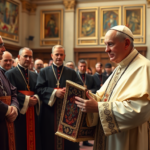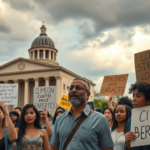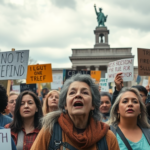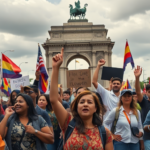**Ireland’s Gender Gap in Politics: A Missed Mark for Diversity**
Ireland’s struggles with gender representation in its parliament have placed the nation at the lowest ranks for gender diversity in Western Europe. With just over a quarter of its legislative seats occupied by women, Ireland lags behind the European average of 32% and significantly below the Western European average of 37%. This article delves into Ireland’s gender inequality in politics, how it affects the local community, and explores potential ways forward amidst calls for greater representation.
**Understanding the Gender Gap in Ireland’s Parliament**
In the recent national election, Ireland filled only 44 out of 174 parliamentary seats with women. This percentage reflects broader challenges within a nation that, despite rapid socio-economic progress since the 1990s, has not managed to sustain its past achievements in female political representation. During the 1990s, Ireland was seen as a frontrunner, evident in the election of Mary Robinson as its first female president in 1990. Yet, subsequent downturns saw the country trail its European peers.
Fiona Buckley, a senior lecturer at University College Cork, notes that while Ireland initiated gender quota legislation in 2012, these measures only came much later compared to countries like Belgium, which had already introduced laws to boost female participation in the mid-1990s. “The 30% quota started a conversation, but hasn’t bridged the gap significantly,” Buckley remarks.
**Local Impact and Community Perception**
For Ireland, closing the gender gap in politics is more than a statistic—it’s a step toward ensuring diverse perspectives and equality in policymaking. Marie Sherlock, a newly elected member of Parliament, points out the barriers women face when entering politics. In an interview, she shared, “Running for local elections while balancing family responsibilities laid bare the systemic hurdles women face today.”
Local organizations like the National Women’s Council of Ireland advocate for extending gender quotas to local elections, highlighting their critical role in shaping political pipelines. “Solving representation at the national level requires us to address biases from root to branch,” states Sarah McNeill, a spokesperson for the council.
**A Path Forward: Leveraging Legislative Quotas**
While recent electoral cycles have shown gradual improvements thanks to higher gender quotas, many see this only as the beginning of a longer journey. With quotas now set at 40%, Ireland’s latest election recorded the highest female participation in history. Yet experts and community leaders suggest these quotas be extended to lower levels of government to permeate the political sphere effectively.
Buckley notes, “The candidate selection process becomes more inclusive with quotas, but we need comprehensive policies addressing barriers to increase representation at every level.” Extending quotas to local offices could ameliorate entry points for women and encourage younger generations to consider careers in public service.
**Previous Setbacks and Future Implications**
Recently, Ireland experienced setbacks with referendums aimed at updating constitutional language about women and families failing to pass. These outcomes underscore a complex landscape where voters hold traditional views amidst progressive reforms like legalizing same-sex marriage in 2016 and abortion access in 2018.
This mixed picture presents Ireland with a dual challenge—to continue advocating for gender diversity in governance while engaging with communities about the benefits it brings. Addressing these needs will require coordinated efforts from legislators, civil society, and international allies highlighting successful models of inclusive policymaking.
**Conclusion: Engaging Communities and Moving Forward**
In light of its gender representation struggles, Ireland’s journey toward political parity emphasizes a broader conversation about equity, merit, and opportunity. Encouraging dialogues, promoting legislative reforms, and empowering women to participate at every level can help shift paradigms in Irish politics and beyond.
For communities affected by these issues, local nonprofits and advocacy groups will continue to provide resources and forums, fostering grassroots movements toward gender equality. Ireland’s pulldown may serve as a teachable moment, spotlighting the commitment required to enact substantive change within a democratic society. As the nation embraces this challenge, success lies in building solidarity and implementing strategies that champion diversity at their core.







